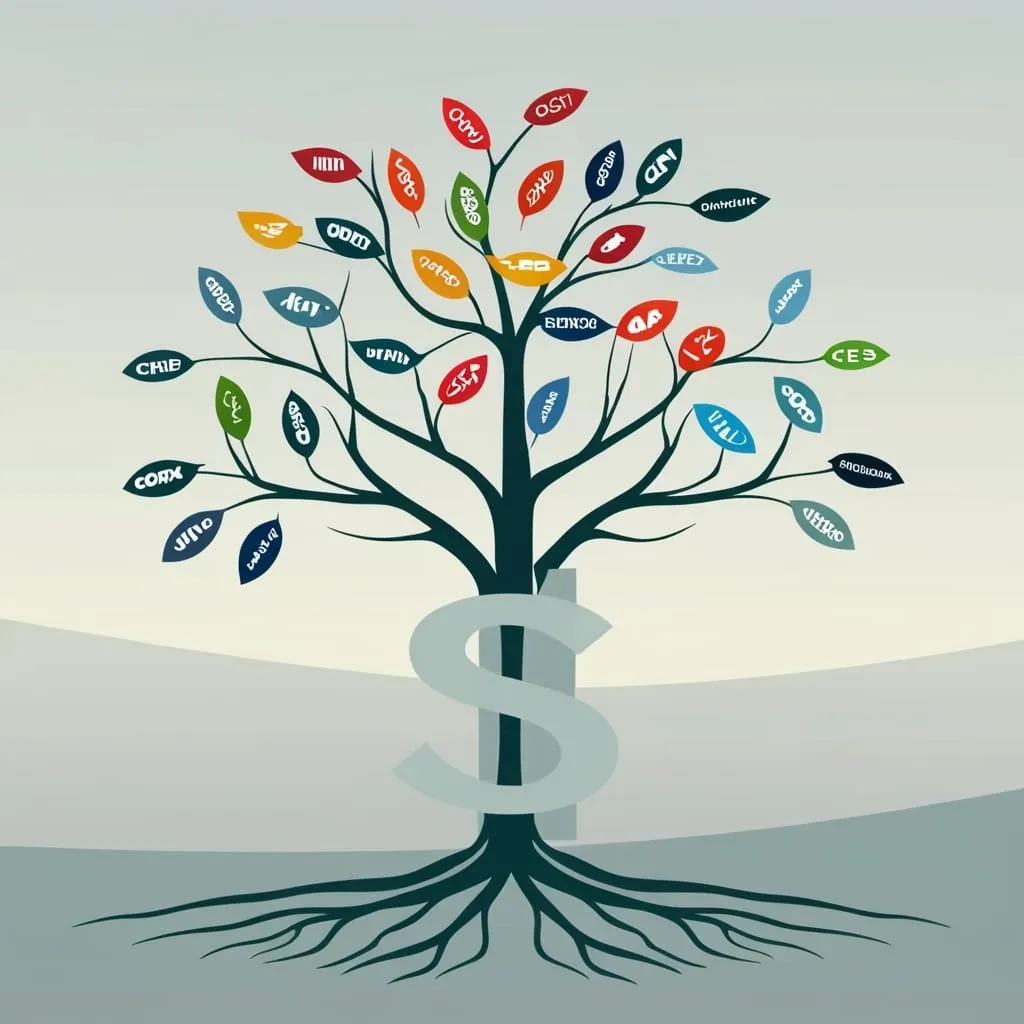When it comes to investing, the ultimate goal is often clear: to grow your wealth and achieve your financial objectives. However, there’s a silent partner in this journey that can significantly impact your returns – taxes. Understanding how to optimize your investment tax efficiency is crucial for maximizing your after-tax returns and ensuring that more of your hard-earned money stays in your pocket.
The Art of Asset Location
Imagine your investment portfolio as a meticulously planned garden. Each plant has its own needs and preferences, and placing them in the right soil can make all the difference. This is essentially what asset location is about – strategically placing your investments in the right type of accounts to minimize tax liabilities.
For instance, high-yield investments such as high-dividend stocks or bonds are best placed in tax-deferred accounts like IRAs or 401(k)s. This way, the income generated by these investments is not immediately subject to taxes, allowing you to grow your wealth more efficiently. On the other hand, investments with lower tax implications, such as stocks with long-term capital gains, can be held in taxable accounts where they can benefit from lower tax rates.
As Warren Buffett once said, “Price is what you pay. Value is what you get.” When you optimize your asset location, you’re ensuring you get the most value out of your investments by minimizing the tax drag.
The Power of Tax-Loss Harvesting
Have you ever had an investment that just didn’t perform as expected? Instead of letting those losses sit idle, you can use them to your advantage through tax-loss harvesting. This strategy involves selling losing positions to offset gains from other investments, thereby reducing your overall tax liability.
For example, if you have a stock that has appreciated significantly and you’re considering selling it, you might also sell a losing position to balance out the gains. This can help you avoid paying taxes on the gains, or at least reduce the amount you owe. It’s a clever way to turn lemons into lemonade, making the most out of both your winners and losers.
Leveraging Tax-Advantaged Accounts
Tax-advantaged accounts are like special savings jars where your money can grow with minimal interference from taxes. Accounts such as Roth IRAs, Roth 401(k)s, and Health Savings Accounts (HSAs) offer unique benefits that can significantly enhance your investment efficiency.
For instance, contributions to a Roth IRA are made with after-tax dollars, but the money grows tax-free and can be withdrawn tax-free in retirement. This can be particularly beneficial if you expect to be in a higher tax bracket in the future. Similarly, HSAs allow you to save for medical expenses with tax-deductible contributions, tax-free growth, and tax-free withdrawals for qualified medical expenses.
As Benjamin Franklin wisely said, “An investment in knowledge pays the best interest.” Understanding and utilizing these tax-advantaged accounts is a form of investing in your financial knowledge.
Strategic Capital Gains Management
Capital gains taxes can be a significant drain on your investment returns, but there are ways to manage them strategically. One approach is to time your capital gains across different tax years. For example, if you have a large capital gain in a particular year, you might consider selling some of your losing positions or deferring other gains to the next tax year to avoid pushing yourself into a higher tax bracket.
Another strategy is to hold investments for more than a year to qualify for long-term capital gains rates, which are generally lower than short-term rates. This patience can pay off in the form of lower taxes and higher after-tax returns.
Dividend Optimization
Dividends can be a steady source of income from your investments, but they also come with tax implications. To optimize dividend income, you should consider the tax treatment of different types of dividends.
For example, qualified dividends are taxed at a lower rate than ordinary dividends. By focusing on investments that generate qualified dividends, you can reduce your tax liability. Additionally, placing high-dividend stocks in tax-deferred accounts can help you avoid immediate taxes on the dividend income.
As Peter Lynch said, “The person who turns over the most rocks will find the most worms.” In this case, the rocks are your dividend-paying stocks, and the worms are the tax efficiencies you can uncover.
The Appeal of Municipal Bonds
Municipal bonds are often overlooked but can be a valuable addition to a tax-efficient investment portfolio. These bonds are issued by local governments and other public entities to finance various projects, and the interest earned is typically tax-free at the federal level and sometimes at the state and local levels as well.
This makes municipal bonds particularly attractive for investors in higher tax brackets, as they can provide a steady income stream without the tax burden. However, it’s important to consider the creditworthiness of the issuer and the potential risks involved.
Charitable Giving Strategies
Charitable giving is not just about philanthropy; it can also be a smart tax strategy. By donating appreciated securities directly to a charity, you can avoid paying capital gains taxes on the appreciation and also claim a deduction for the full fair market value of the securities.
For example, if you have a stock that has doubled in value since you purchased it, donating it to a charity can help you avoid the capital gains tax you would owe if you sold the stock. This approach not only supports a good cause but also enhances your tax efficiency.
As John D. Rockefeller once said, “Think of giving not as a duty but as a privilege.” When you combine charitable giving with tax efficiency, you’re turning a duty into a double privilege.
Annual Reviews and Professional Advice
Optimizing your investment tax efficiency is not a one-time task; it requires regular monitoring and adjustments. It’s advisable to review your portfolio annually to identify opportunities for tax optimization. This might involve rebalancing your asset location, harvesting tax losses, or adjusting your capital gains strategy.
Consulting with a tax professional can also provide personalized strategies tailored to your specific financial situation and goals. They can help you balance tax efficiency with your overall investment objectives, ensuring that you’re not sacrificing potential returns for tax savings.
As the saying goes, “A stitch in time saves nine.” Regular reviews and professional advice can help you avoid costly tax mistakes and ensure your investments are working as efficiently as possible.
Balancing Tax Efficiency with Investment Goals
While tax efficiency is crucial, it should not come at the expense of your overall investment goals. It’s important to balance these two aspects carefully. For instance, if an investment offers high returns but is tax-inefficient, it might still be worth considering if it aligns with your long-term goals.
The key is to find investments that offer a good balance between returns and tax efficiency. This might involve a mix of tax-efficient investments like index funds and ETFs, along with more aggressive investments that offer higher potential returns.
As Charles Schwab said, “The biggest risk is not taking any risk.” By balancing risk, return, and tax efficiency, you can create a robust investment strategy that helps you achieve your financial objectives.
In conclusion, optimizing your investment tax efficiency is a multifaceted strategy that involves careful planning, regular monitoring, and a deep understanding of tax implications. By leveraging asset location, tax-loss harvesting, tax-advantaged accounts, strategic capital gains management, dividend optimization, municipal bond investing, and charitable giving strategies, you can significantly enhance your after-tax returns.
So, take a step back and look at your investment portfolio as a garden that needs constant nurturing. With the right strategies and a bit of patience, you can grow your wealth more efficiently and ensure that more of your hard-earned money stays where it belongs – in your pocket.






